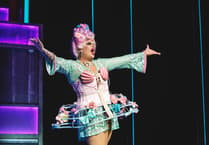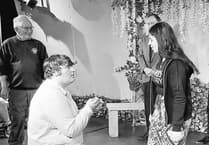It’s more than 12 years since a wind quintet performed for NADSA concerts, if ever. The composers ranged from the 18th century to contemporary, so something for everybody. What quickly knitted it all together was the exuberance and vitality of The Atea Quintet.
The horn’s entry for Gershwin’s Summertime exuded sultry warmth, and as other instruments joined with different timbre’s, I found myself not missing the human voice. And just as I was wallowing in southern ease, I was struck with ‘It Ain’t Necessarily So’. Yes, of course, we were hearing an arrangement by Hashimoto: that brought me back to reality.
The next two composers were unfamiliar - composers best known as 18th and 19th century wind quartet pioneers. We heard Danzi’s Quintet in G minor Op 56 No 2. Its movements took us from light touches to a smooth paced lilting walk, then a lively dance, and finally the horn and bassoon featured in the action to a spirited conclusion. Reicha’s Andante arioso & Adagio with cor anglais gave us a chance to appreciate the warmer smoother texture of the cor anglais as opposed to the oboe, the more usual constituent of a wind quintet. Melodious and featuring all five instruments, this was a delight.
I am not alone in thinking that we should hear more of both Danzi and Reicha: both are accessible.
The Atea introduced the next item as something completely different. Malcolm Arnold’s Three Sea Shanties Op 4 definitely were fun to listen to, not least because I find I am waiting for Bitez’s Habanera to emerge from ‘...the Drunken Sailor’. But for the performers it was a display of virtuosic skills and timing co-ordination.
Different again was Poulenc’s Novelette No1 in C major arranged by Emerson. Here the emphasis was on sound colour blending, and Atea’s result was a treat.
In the 2nd half the much more complex world of Frank Bridge’s Divertimenti for wind quartet. The Atea flagged this as angular and angry - and they won me over.
Nielsen overheard the Copenhagen Wind Quintet playing Mozart, and was inspired to write his own Quintet in which he reflects the characters of the Copenhagen players through the instruments. In the variation for Bassoon and clarinet Nielsen asks them to argue like a man and wife! The bassoon (husband) goes quiet at the end - probably wisely. Nielsen wondered “...if it’s all any use?” Listening to Atea the answer is definitely yes.
The concert ended with a piece called Umoja by Valerie Coleman. This was a really attractive and joyously played miniature to end.
The concert had been arranged at short notice, Atea stepping in for another quintet. Even with two substitutions, their performance was sparkling. Reviewer: Jeff Collman




